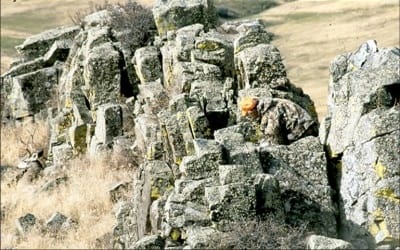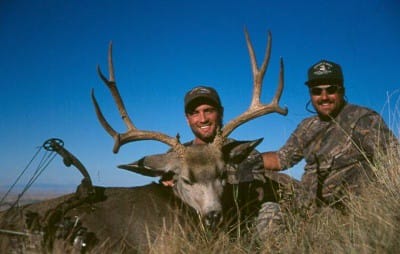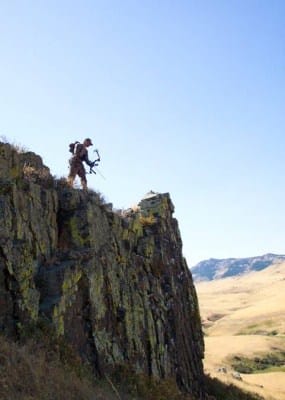
Mule deer bucks are, by far, one of the biggest challenges for bow hunters in the West. The following techniques will help you get close to mule deer bucks with your bow.
As my client left our glassing location for his first attempt at a bedded trophy mule deer, I gave him a few last-minute pieces of advice. First, if the wind isn’t perfect when you are getting close to the deer, back off. Secondly, watch my signals. If the buck moves, I will redirect you to him. Finally, the last 10 steps will be the most crucial, take as long as you need. As he left, I sat with my 30x Bushnell Elite spotting scope watching my client’s progress.
Everything was perfect until he was ready to draw his bow back. He bumped a small pebble with his foot and the buck exploded out of his bed. Three days later and a few more stalks under his belt he arrowed a beautiful Pope & Young class deer, stalking it to within 10 yards and shooting it in its bed.

Where to start
If you are serious about taking a trophy mule deer with a bow you need to start preparing months before season. Start by doing your research for areas that have large mule deer. Drawing an archery tag is generally easier then a rifle license. However, it may take a few years to accumulate enough bonus points to draw a license in a good area. Consider states like Montana, where non-residents can draw a general license and hunt a vast majority of the hunting districts.
Plan your strategy
It’s not enough to just spot a good mule deer buck in his bed the conditions have to be right for you to approach him. Large mule deer bucks become more elusive with age. Wait for perfect conditions to stalk a buck you have been watching, don’t stalk unless everything is in your favor.
The stalk
When making your stalk, wait until later in the morning so the thermals are consistently coming up hill. The later you wait in the morning the higher chance you have of making sure the buck is in a bed he plans to stay in. Bucks will bed as many as four to five times in a morning on a hot day moving to better shaded areas. Wear clothing that is quiet. Mule deer have very large ears which contribute to their incredible ability to hear even the slightest bobble on the hunter’s part.
Flagging and signals that work
Hunting with a partner or a guide will greatly increase your odds. Have a flag that is visible from a great distance away. The flagman must stand a safe distance away from the buck, not to spook him from the movement of the flag.
1. Point the flag in the direction you want the shooter to go.
2. If you want the shooter to back up, point directly at them.
3. If the shooter is right on course hold the flag above your head for the shooter to continue in his or her current direction.
4. Signal that the buck is gone by waving a flag in a continuous motion back and forth over your head. This will save the shooter any wasted time that would be spent on stalking a deer that is no longer there.
The final steps
When approaching a bedded buck, extreme caution should be taken on the shooters part. Constantly check your wind as wind currents can change. If you are stalking a buck that is bedded below a rock wall, peak over to locate his exact location before drawing your bow. When stalking mule deer you must always watch where your shadow is cast. Remember if the conditions aren’t right don’t force the stalk. You may only get one chance on that buck of a lifetime.




